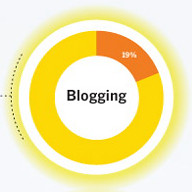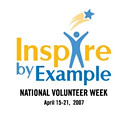Harris Interactive, a full-service market research firm with more than 40 years' experience, provided a free webinar on
Apr. 26 that treated participants to the future of integrated media, especially as it applies to mobile advertising (cellular phones).
Led by Judith Ricker, (president, marketing communications research) and Joseph Porus (chief architect, technology research practice), the webinar presented preliminary data that suggests when consumers are educated, mobile advertising will work in some exciting (perhaps spooky) ways. The research is solid, and with some minor modifications in my opinion, some of their ideas have a potential that exceeds current consumer imagination.
Ricker and Porus are spot on in recognizing that the Internet is capturing a higher viewership than traditional media (no wonder Viacom is ready to invest a half billion dollars in digital media); that continued breakthroughs in mobile technology (such as the Apple iPhone) will change the way we perceive integrated digital communication (innovation); and that the time has come for companies who view their communication as decentralized to rethink that old model (I'm big on integrated communication).
According to Harris Interactive, mobile advertising is particularly adept at strengthening the bond between the brand and the consumer, communicating messages, and changing behavior. I agree, absolutely. One question that remains is: are consumers ready?
From Harris Interactive's research, only 10 percent of consumers are open to the idea of mobile advertising. However, when paired with incentives, this number jumps to 36 percent. When I first wrote about this subject, I wasn't impressed with these numbers. However, when applied with the Revised Technology Adoption Life Cycle, 36 percent is enough momentum to break into the mainstream.
That is not to say adoption is not without potential pitfalls. Of those who expressed interest in mobile advertising, 66 percent said that consumer choice (the ability to opt in or out) is paramount to ensuring public acceptance. Ricker and Porus reinforced the point several times, saying that as soon as consumers begin to feel like the advertising messages they receive are spam, every potential outcome could be limited by legislation. I hope not because Harris Interactive has some stellar ideas. Here are four subject area highlights (though there are much more worth consideration):
Test Message Ads. Harris Interactive places weight on text messaging because 56 percent of those surveyed said they would prefer it over other forms. I differ here, but only because the consumer's opinion seems attached to how they perceive cell phones right now. Text message ads also have the potential to be the most intrusive. Where I see them best applied is as opt-in sale announcements to remind consumers when Macy's is having a white sale or Borders has a book signing.
Locational Advertising. Harris Interactive suggests consumers can be pointed to a sales rack with the exact dress they are looking for (though the concept does not have to be this precise). I find it spooky that advertisers will know where I am all the time with new GPS features in our phones. However, when I asked my wife, she thought that was a great idea!!! So who I am to say?
Content Advertising. Harris Interactive broke it out differently, but I see it as all the same: entertainment, news, games, social media, downloads, ring tones, and Web browsing. If the foundation is built right, content developers — blogs, digital media, etc. — could receive a real financial boost provided content distribution remains open. Consumers would, in my opinion, have no problem with content advertising if that meant their options could be provided for free (Joost is playing with several ideas right now; Revver has a great one in place).
However, as Harris Interactive pointed out, everyone wants a piece of the action: content developers, content distributors, and service providers. At the end of the day, who knows what it will look like. I have some hunches, but at the moment, they are only that. Despite these hunches, I'm hoping content developers come up on top.
Consumer Profiling. This is perhaps my least favorite trend, but consumers see it differently. Overwhelmingly, as Harris Interactive presented, consumers embrace profiling because they can limit their own advertising exposure based on preferences. They already accept it at ITunes, Amazon.com, and with Internet cookies. So, I'm in the minority. Personal preferences aside, writing individually specific ad messages would benefit someone in advertising like me.
Certainly, there is no way everything presented could be confined to a single post. However, the topic is important and something that I'm certain I'll be revisiting time and time again. Sure, I have some concerns, especially about advertising becoming more pervasive and losing its effectiveness as a result. But as an ad guy, it's part of my job to figure out the best way to solve that problem.
In sum, kudos to Harris Interactive and its work in the field. I intentionally entered as a skeptic to see how difficult it would be to come out a believer. While I could discuss some finer differences, the net result is that it was not difficult at all. Harris Interactive is an excellent research resource in subject matter and my compliments on seeing them take the lead.

Apr. 26 that treated participants to the future of integrated media, especially as it applies to mobile advertising (cellular phones).
Led by Judith Ricker, (president, marketing communications research) and Joseph Porus (chief architect, technology research practice), the webinar presented preliminary data that suggests when consumers are educated, mobile advertising will work in some exciting (perhaps spooky) ways. The research is solid, and with some minor modifications in my opinion, some of their ideas have a potential that exceeds current consumer imagination.
Ricker and Porus are spot on in recognizing that the Internet is capturing a higher viewership than traditional media (no wonder Viacom is ready to invest a half billion dollars in digital media); that continued breakthroughs in mobile technology (such as the Apple iPhone) will change the way we perceive integrated digital communication (innovation); and that the time has come for companies who view their communication as decentralized to rethink that old model (I'm big on integrated communication).
According to Harris Interactive, mobile advertising is particularly adept at strengthening the bond between the brand and the consumer, communicating messages, and changing behavior. I agree, absolutely. One question that remains is: are consumers ready?
From Harris Interactive's research, only 10 percent of consumers are open to the idea of mobile advertising. However, when paired with incentives, this number jumps to 36 percent. When I first wrote about this subject, I wasn't impressed with these numbers. However, when applied with the Revised Technology Adoption Life Cycle, 36 percent is enough momentum to break into the mainstream.
That is not to say adoption is not without potential pitfalls. Of those who expressed interest in mobile advertising, 66 percent said that consumer choice (the ability to opt in or out) is paramount to ensuring public acceptance. Ricker and Porus reinforced the point several times, saying that as soon as consumers begin to feel like the advertising messages they receive are spam, every potential outcome could be limited by legislation. I hope not because Harris Interactive has some stellar ideas. Here are four subject area highlights (though there are much more worth consideration):
Test Message Ads. Harris Interactive places weight on text messaging because 56 percent of those surveyed said they would prefer it over other forms. I differ here, but only because the consumer's opinion seems attached to how they perceive cell phones right now. Text message ads also have the potential to be the most intrusive. Where I see them best applied is as opt-in sale announcements to remind consumers when Macy's is having a white sale or Borders has a book signing.
Locational Advertising. Harris Interactive suggests consumers can be pointed to a sales rack with the exact dress they are looking for (though the concept does not have to be this precise). I find it spooky that advertisers will know where I am all the time with new GPS features in our phones. However, when I asked my wife, she thought that was a great idea!!! So who I am to say?
Content Advertising. Harris Interactive broke it out differently, but I see it as all the same: entertainment, news, games, social media, downloads, ring tones, and Web browsing. If the foundation is built right, content developers — blogs, digital media, etc. — could receive a real financial boost provided content distribution remains open. Consumers would, in my opinion, have no problem with content advertising if that meant their options could be provided for free (Joost is playing with several ideas right now; Revver has a great one in place).
However, as Harris Interactive pointed out, everyone wants a piece of the action: content developers, content distributors, and service providers. At the end of the day, who knows what it will look like. I have some hunches, but at the moment, they are only that. Despite these hunches, I'm hoping content developers come up on top.
Consumer Profiling. This is perhaps my least favorite trend, but consumers see it differently. Overwhelmingly, as Harris Interactive presented, consumers embrace profiling because they can limit their own advertising exposure based on preferences. They already accept it at ITunes, Amazon.com, and with Internet cookies. So, I'm in the minority. Personal preferences aside, writing individually specific ad messages would benefit someone in advertising like me.
Certainly, there is no way everything presented could be confined to a single post. However, the topic is important and something that I'm certain I'll be revisiting time and time again. Sure, I have some concerns, especially about advertising becoming more pervasive and losing its effectiveness as a result. But as an ad guy, it's part of my job to figure out the best way to solve that problem.
In sum, kudos to Harris Interactive and its work in the field. I intentionally entered as a skeptic to see how difficult it would be to come out a believer. While I could discuss some finer differences, the net result is that it was not difficult at all. Harris Interactive is an excellent research resource in subject matter and my compliments on seeing them take the lead.





















